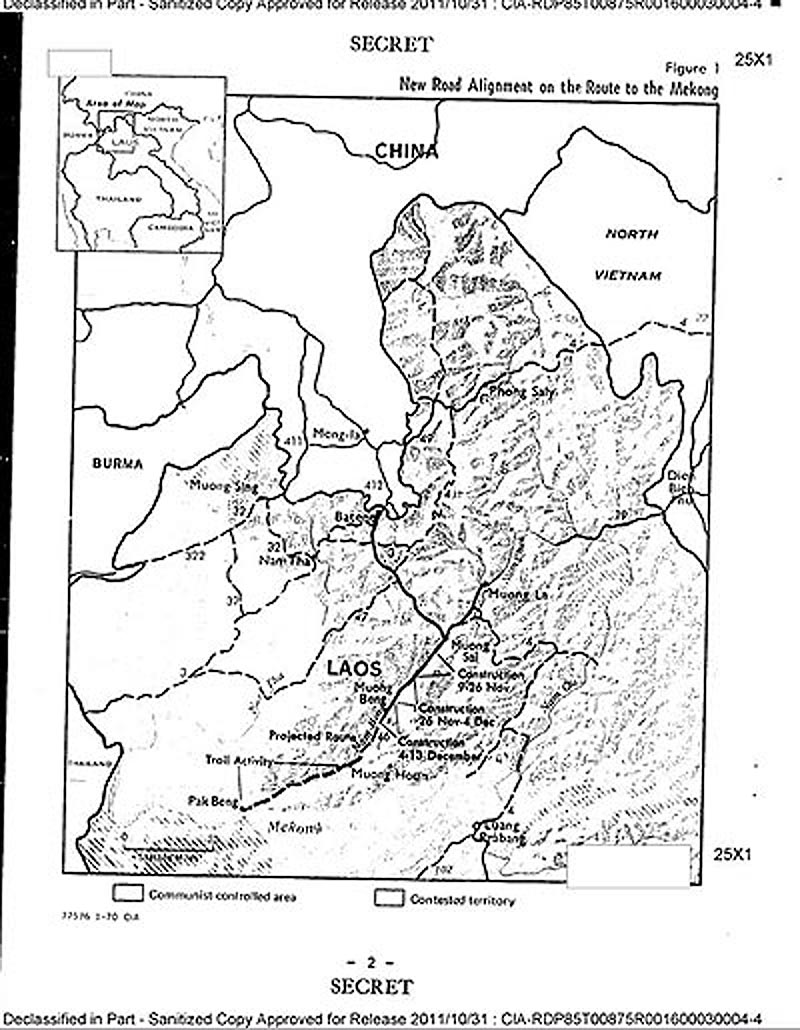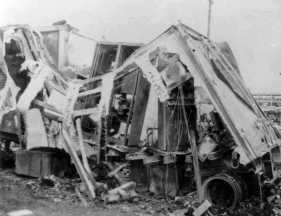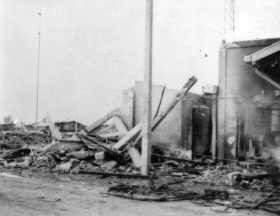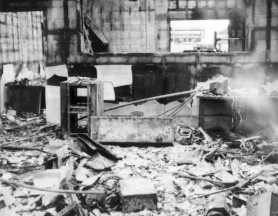
During the Vietnam War, tactical reconnaissance missions were flown into Laos on a regular basis. On Friday, April 10, 1970, an RF-4C departed from Udorn RTAFB shortly after 1:00pm for a recon mission to monitor the progress of a new road the Chinese were building to Burma through northwest Laos. The weather was good that day with high cirrus clouds and visibility that was reported at 5 miles or better. The U.S. had been conducting reconnaissance flights over Laos with the permission of the its government since l964.

On previous flights over the construction site, the flights were not escorted with armed aircraft and there had been no previous instances of anti-aircraft fire. After completing the first target run, the crew noticed a failure of the PC-2 hydraulic system during the climb-out. During the return back Udorn, the utility hydraulic system had also failed. The navigator noticed a hole in the wing just forward of the spoiler, apparently caused by ground fire. The pilot lowered the gear at 5000 ft. and performed a controllability check. The crew performed a series of system checks and determined that there was adequate control to land the aircraft and decided to attempt a no flap landing and barrier engagement. The final approach was flown at approximately 185 kts. from the southeast.
Upon the final approach for landing at the end of runway 30, the aircraft began an uncontrollable roll to the right. The pilot attempted to counter the roll with full left stick and rudder. The controls had no effect on the aircraft and it continued to roll. A go around was initiated but the pilot was unable to stop the roll.
The crew members then elected to eject from the aircraft. The pilot landed on the indoor theatre building and fell from it fracturing a bone in his right foot. The co pilot landed on a building and managed to stay on it suffering a laceration above the right eye.

The pilotless jet continued to roll to the right heading right into the Udorn base housing area. The jet skimmed the top off of several hootches, went through a two story BOQ building and landed inside the AFTN Udorn station. The jet fuel ignited on impact and killed eight broadcasters inside the station. The station’s handyman, Prateep, managed to escape by literally running out of the front door of the station. Sgt. John Rose, who was located in the TV van just behind the station, managed to make a short emergency call to the base fire department to report the fire. Sgt Rose had relatives who were coming to see him in Bangkok. The fire eventually consumed the TV van, and Sgt Rose died inside, unable to get out, since the only two entry doors faced the burning inferno

Jack Lynch, the station manager, was at the base hospital, which was just around the corner from the station. He had heard an unmistakable noise from the direction of the station and ran back. He recalled that “I went around the corner and there was just nothing there. The station was enveloped in smoke and flame and it looked like the whole thing was destroyed.” (Brass Button Broadcasters, Trent Christman, l992, p 132).
Lynch contacted Capt. Dick Hiner in Korat at network headquarters to report the accident, since the network commander, Lt. Col. Dave LaFollette, was back in the states on leave. Lynch was unsure whether there were any survivors at this point.
Cpt. Hiner contacted 13th AF Information Office and notified CMS John Bradley. Together with SMS John Ushold, both he and Hiner began the awful task of notifying the chain of command, planning a memorial service and helping to notify the next of kin. Lynch called back to say it didn't look as though there were any survivors, but didn't know exactly, who was in the station and who wasn't.
Sgt Gary Sumrall was still lying in his bunk when he heard the roar of the F-4 go overhead and then heard the radio go after the air shortly after 2:05pm. A1C Raymond Hackett had just left the building to pick the mail when the plane crashed into the station.
 Over
at NKP, Sgt Frank Stanton, had seen the news flash on the wire services.
He immediately called his superior, Jim Treat, to show him the news.
Attempts were made to contact the station with no success. Sgt Jim
Brisbois, NKP staff member, was TDY to Udorn, and happened to be away from the
station at the time of the incident. He later contacted the NKP station
to report his whereabouts. Sgt Dave Ramsey, who was scheduled to do a
photo shoot at the AFTN Udorn station that afternoon, had been called out to a
MEDCAP assignment near Nong Kai, and discovered what happened when he returned
later that afternoon. He lived in a trailer directly behind the station.
Over
at NKP, Sgt Frank Stanton, had seen the news flash on the wire services.
He immediately called his superior, Jim Treat, to show him the news.
Attempts were made to contact the station with no success. Sgt Jim
Brisbois, NKP staff member, was TDY to Udorn, and happened to be away from the
station at the time of the incident. He later contacted the NKP station
to report his whereabouts. Sgt Dave Ramsey, who was scheduled to do a
photo shoot at the AFTN Udorn station that afternoon, had been called out to a
MEDCAP assignment near Nong Kai, and discovered what happened when he returned
later that afternoon. He lived in a trailer directly behind the station.
Both the pilot and co pilot were taken to the base hospital for treatment of their injuries. It was there that they learned the fate of the nine broadcasters at the station.
Within 24 hrs., Capt Hiner had arranged to bring the survivors down to Korat, given them their own radio studio, arranged for land lines to Udorn and put them on the air serving the Udorn base from Korat. Two mobile homes were borrowed from the Chase Manhattan Bank as a temporary station. TSgt Jack Davis, a programmer at Korat and man known for getting things done, assembled the replacement equipment to transport to Udorn on a C-47 with crew. Capt. HinerHe sent several engineers that included SSgt. Bill Ostrander and Sgt John Bovalink to Udorn later that Friday afternoon to restore radio service as quickly as possible.
The cause of death was suffocation on the official notification of death reports of the nine broadcasters.
The base commander discouraged the crew from writing any letters of apology to the families of the men who were killed.
Emergency exit doors to all TV Vans were installed with 60 days of the incident.
(Updated 4/18/03)
The preceding narrative was compiled from the following sources: (1) Recollection from Dick Hiner, acting AFTN commander and Deputy Chief, AFTN, (2) the Commander’s 48 Hr. Mishap Analysis Report, 432nd TRW unit files, AFHRA, Maxwell AFB, AL (3) Brass Button Broadcasters by Trent Christman, (4) recollections by Jim Treat, Dave Ramsey, Gene Rossel, (5) Interview with Col. Sam Newman (ret.), pilot at Udorn RTAFB), (5) AFTN Unit Histories, AFHRA, Maxwell AFB, AL.